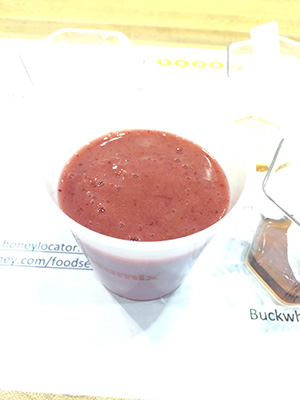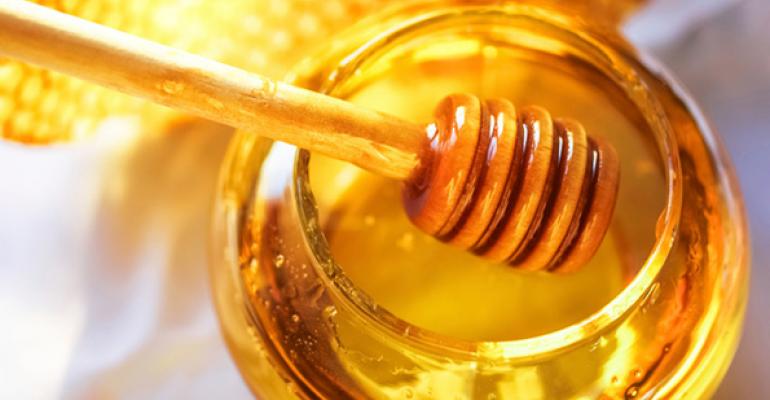
There are 300 varieties of honey in the U.S., from mild clover to bold buckwheat. If you just see honey as something to offer with tea, you’re missing out on a versatile staple that can add flavor, balance, texture and more to a variety of foods and beverages.
When a chef meets honey, it’s a sweet collaboration, as was demonstrated at the Get Your Honey’s Worth NRA Show session featuring Kendall College vice president of the School of Culinary Arts Chris Koetke, CEC, CCE, HAAC, cookbook author and Vitamix chef Bev Shaffer and Andrea Schepke of the National Honey Board.
“I went on a honey tour and got to play in the beehives, and I completely fell in love with honey,” Koetke said, adding that buckwheat honey is his favorite, with its strong flavor profile that veers towards the richness of molasses. “Honey is an ingredient that can go anywhere.”
And this is the year honey has really hit its sweet spot, having been named “flavor of the year” by Firmenich, a Swiss company specializing in flavors and fragrances.

“While we’re excited about it, it’s actually kind of a misnomer because there are so many different flavors of honey,” Schepke said.
The flavors depend on the floral source—which flowers the bees are visiting before working their magic. Wildflower honey is not from a single-source flower, it turns out, since the bees who make it visit a variety of flowers within their radius.
Honey’s flavor range makes it an ingredient that works as a flavor bridge, and it “plays well with others,” Schepke said, mentioning Pizza Hut’s recent innovation with a honey-Sriracha pizza.
Here’s how honey works with different flavors:
• Sweet: Honey enhances sweetness, achieving the same level of sweetness as sugar with less volume
• Sour: Honey decreases sourness, pairing nicely with citrus, berries and yogurt, along with pickled or fermented products
• Bitter: Honey counters bitterness, bringing a balance to coffee and tea flavors.
• Salty: Honey modifies the salty perception, and can compliment cured products like ham
Great applications for honey include barbecue sauce (buckwheat is a natural choice for this), salad dressing (honey is an emulsifier), a glaze, a marinade, an ice cream topping and as a part of handcrafted beverages that mixologists are shaking up more and more often.
Shaffer brought volunteers from the audience on stage and demonstrated a Honey Kombucha Smoothie. It started with 1 ¼ cups ginger kombucha (a fermented drink that’s said to settle the stomach), the juice of one lemon, three tablespoons orange blossom honey, one cup of frozen mango chunks, thawed, half of a frozen banana and one cup of frozen blackberries.
After the demo, an audience member asked about substituting honey for sugar in a mojito. The National Honey Board in fact has a recipe for that: the Honey Bee-jito (mint, honey simple syrup, orange and lime slices, white rum and club soda).

